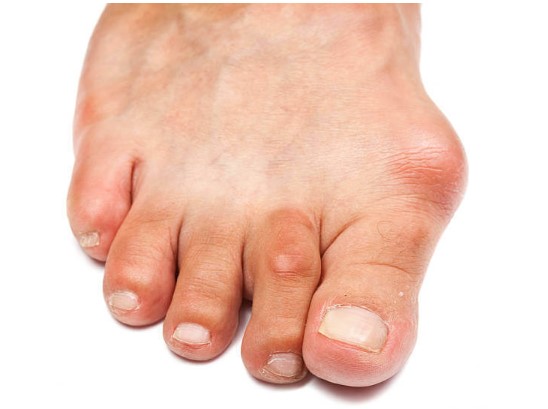How Bunion Surgery Can Alleviate Foot Pain: An In-Depth Look
How Bunion Surgery Can Alleviate Foot Pain: An In-Depth Look

Foot pain can be a debilitating condition, affecting not only your mobility but also your overall quality of life. One of the most common sources of chronic foot pain is a bunion—a bony bump that forms on the joint at the base of the big toe. Bunions develop when some of the bones in the front part of your foot move out of place, causing the tip of your big toe to be pulled toward the smaller toes and forcing the joint at the base of your big toe to stick out. This can lead to pain, swelling, and discomfort that worsens over time. When conservative treatments fail to provide relief, bunion surgery becomes a viable option to alleviate the pain and restore normal foot function.
Understanding Bunions and Their Impact on Foot Health
A bunion is not merely a cosmetic issue; it is a progressive condition that can cause significant discomfort and foot deformity if left untreated. Initially, you may notice a small bump on the side of your foot near the base of your big toe. As the bunion progresses, the bump may become larger, and the big toe may start to angle toward the second toe. This misalignment can cause a variety of symptoms, including:
- Pain and Tenderness: The area around the bunion can become sore and tender, especially when wearing tight or narrow shoes.
- Swelling and Redness: Inflammation around the joint can lead to swelling and redness.
- Restricted Movement: As the bunion progresses, the range of motion in the affected joint may decrease, making it difficult to move the toe.
- Calluses and Corns: The misaligned toe can rub against the inside of your shoe, leading to the development of calluses and corns.
In severe cases, the pain can become so intense that it interferes with your ability to walk or engage in daily activities. For many people, this is the point at which bunion surgery becomes necessary.
Types of Bunion Surgery
Bunion surgery, also known as a bunionectomy, involves removing the bunion and realigning the bones in the foot to correct the deformity. There are several different types of bunion surgery, and the appropriate procedure depends on the severity of the bunion and the specific needs of the patient.
- Osteotomy: This is one of the most common types of bunion surgery. It involves cutting and realigning the bones in the foot to correct the deformity. There are different types of osteotomies, including distal, proximal, and double osteotomies, each tailored to the specific needs of the patient.
- Exostectomy: In this procedure, the surgeon removes the bump from the toe joint. However, exostectomy alone is rarely sufficient to correct a bunion because it does not address the underlying misalignment of the bones.
- Arthrodesis: This procedure involves fusing two bones in the big toe joint to correct severe bunions or arthritis. While this surgery can effectively alleviate pain, it may also limit the range of motion in the big toe.
- Minimally Invasive Bunion Surgery: This advanced technique involves smaller incisions and specialized instruments to correct the bunion. The minimally invasive approach typically results in less pain, a shorter recovery time, and smaller scars compared to traditional surgery.
The Surgical Procedure: What to Expect
Before undergoing bunion surgery, your surgeon will conduct a thorough examination of your foot, including X-rays, to determine the extent of the deformity and the best surgical approach. The surgery is usually performed under local anesthesia with sedation, but in some cases, general anesthesia may be used.
During the procedure, the surgeon will make an incision near the affected joint and carefully remove the bunion. Depending on the type of surgery, the surgeon may then cut and realign the bones, fuse the joint, or correct any other deformities. The goal of the surgery is to relieve pain, restore proper alignment, and improve the function of the foot.
The length of the surgery can vary depending on the complexity of the bunion and the type of procedure being performed. In most cases, the surgery takes about one to two hours.
Recovery and Rehabilitation
Recovery from bunion surgery is a gradual process that requires patience and adherence to your surgeon’s instructions. Immediately after the surgery, your foot will be bandaged, and you may need to wear a surgical shoe or boot to protect the area and keep the bones in place.
Here’s what you can expect during the recovery process:
- First Few Days: You will need to keep your foot elevated as much as possible to reduce swelling and promote healing. Pain and swelling are common during the first few days, and your doctor may prescribe pain medication to help manage discomfort.
- Weeks 1-2: Most patients are able to walk with the help of crutches or a walker, but weight-bearing activities should be limited. You may need to attend follow-up appointments to have your bandages changed and to monitor your progress.
- Weeks 3-6: During this period, you may start to gradually increase your activity level. Physical therapy may be recommended to help restore strength and mobility to your foot. It’s essential to follow your surgeon’s guidelines regarding activity restrictions and rehabilitation exercises.
- Months 2-6: Full recovery from bunion surgery can take several months. During this time, you may need to continue physical therapy and avoid high-impact activities that could strain your foot. The swelling will gradually decrease, and you should start to notice a significant reduction in pain.
Potential Risks and Complications
As with any surgical procedure, bunion surgery carries some risks. These can include:
- Infection: Although rare, infections can occur at the surgical site and may require additional treatment.
- Nerve Damage: There is a small risk of nerve damage, which can lead to numbness or tingling in the foot.
- Stiffness or Restricted Movement: Some patients may experience stiffness or a reduced range of motion in the big toe after surgery.
- Recurrence of the Bunion: In some cases, the bunion may return, especially if proper foot care is not maintained post-surgery.
It’s important to discuss these risks with your surgeon and weigh them against the potential benefits of the surgery.
Conclusion: The Path to Pain-Free Feet
Bunion surgery offers a proven solution for those suffering from chronic foot pain due to bunions. By addressing the underlying deformity, the surgery can alleviate pain, improve foot function, and enhance your overall quality of life. Whether you opt for traditional surgery or the more advanced minimally invasive bunion surgery, the key to a successful outcome lies in careful planning, a skilled surgeon, and diligent post-operative care.
If you’re considering bunion surgery in Scottsdale, AZ, it’s essential to consult with a qualified foot and ankle specialist who can guide you through the process and help you make an informed decision. With the right approach, you can look forward to a future free from the pain and discomfort caused by bunions.








